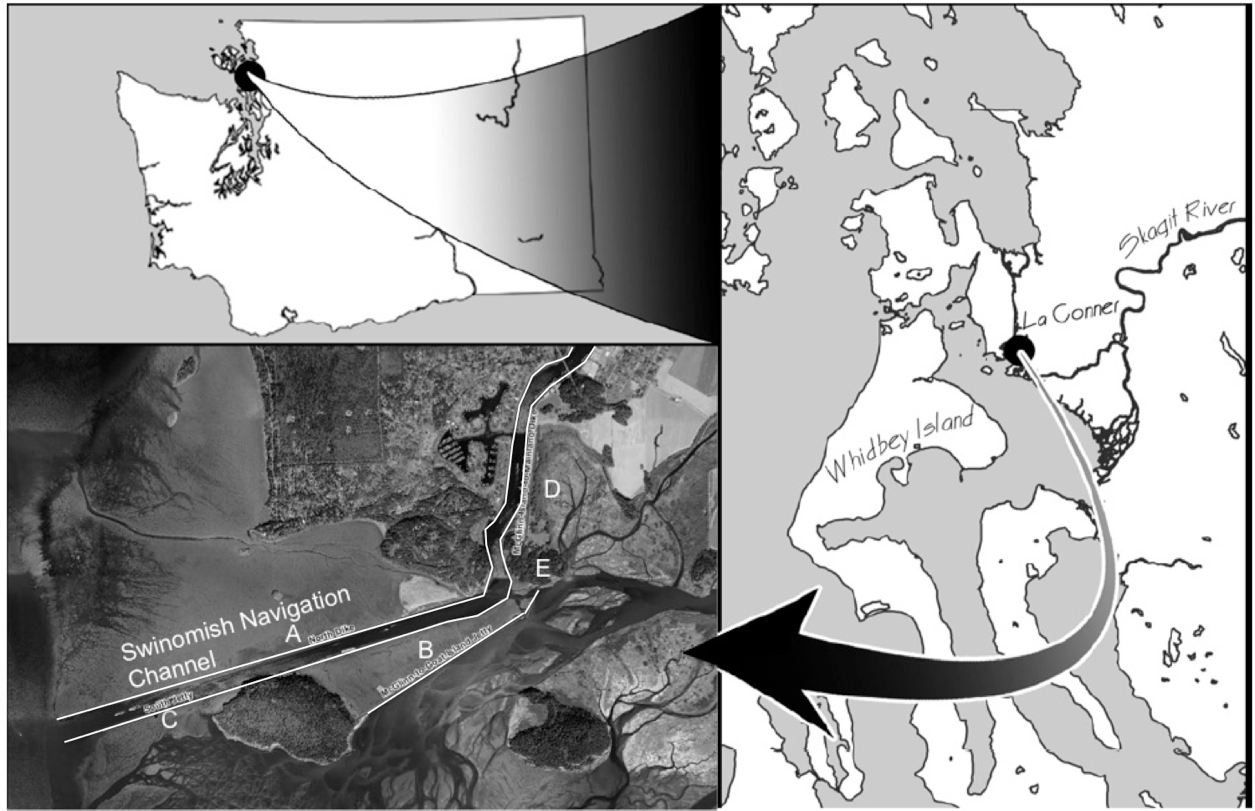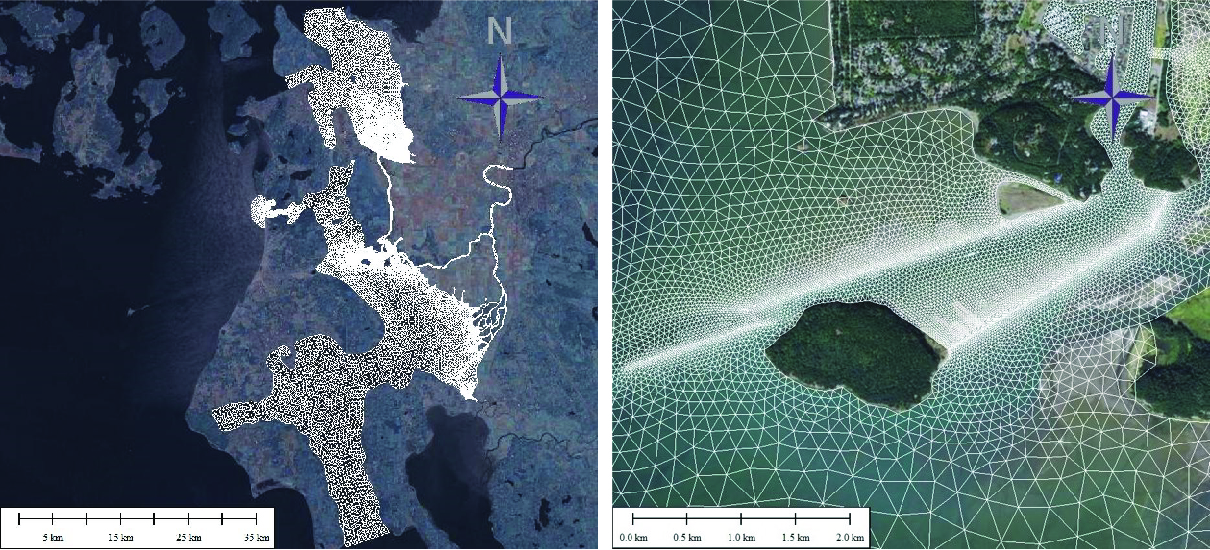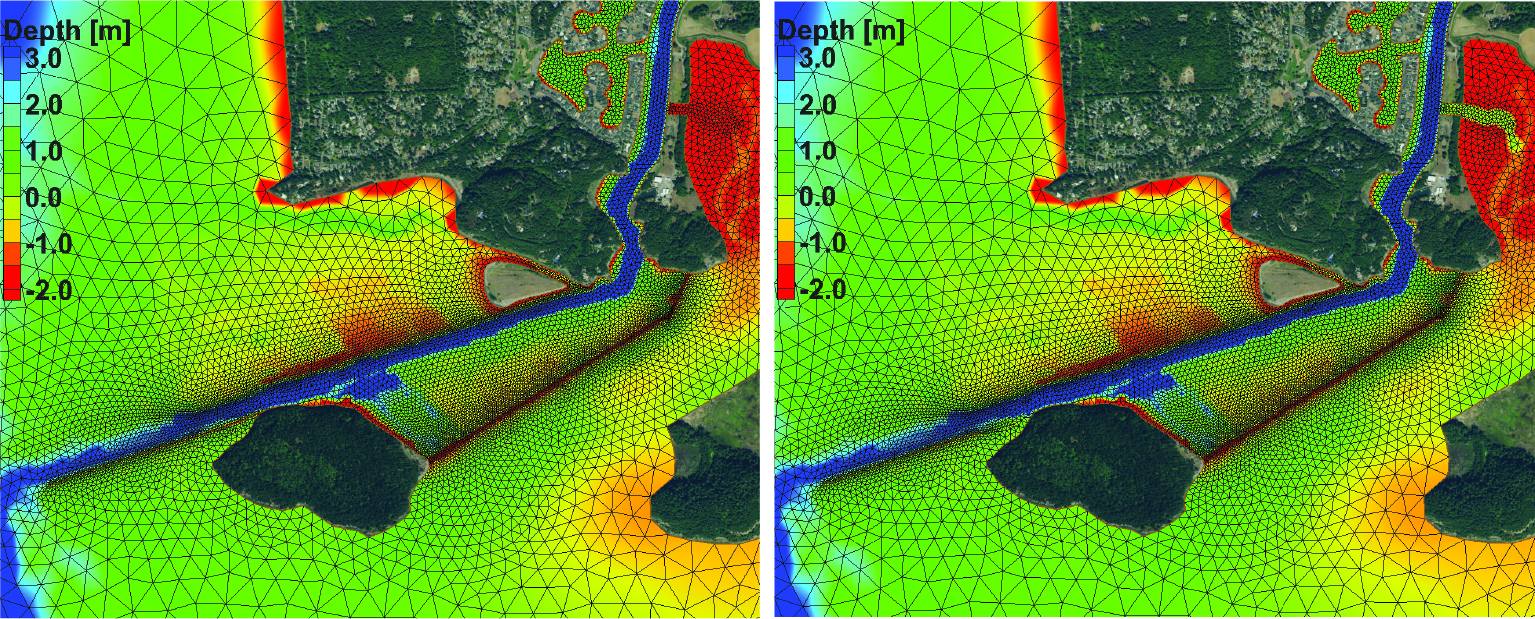SSM Sediment Transport: Swinomish Channel
Sediment Transport into the Swinomish Navigation Channel, Puget Sound

PNNL supported U.S. ACE and the Skagit River System Cooperative with hydrodynamic and sediment transport modeling to evaluate the merits and demerits of proposed alternatives in connection with maintenance of the Swinomish Navigation Channel. The 11-mile Swinomish Federal Navigation Channel provides a safe and short passage to fishing and recreational craft in and out of Northern Puget Sound by connecting Skagit and Padilla Bays. A network of dikes and jetties were constructed through the Swinomish corridor between 1893 and 1936 to improve navigation functionality. Over the years, these river training dikes and jetties designed to minimize sedimentation in the channel have deteriorated resulting in reduced protection of the channel. The need to repair or modify dikes/jetties for channel maintenance however may be in conflict with salmon habitat restoration goals aimed at improving access, connectivity and brackish water habitat. A number of restoration projects have been proposed in the Skagit delta involving breaching, lowering, or removal of dikes.

To assess relative merits of two of the available alternatives, a hydrodynamic model of the Skagit River estuary was developed using the Finite Volume Community Ocean Model (FVCOM). The model development, grid refinement, and calibration were conducted using oceanographic data collected from the years 2006 and 2009 with a focus on the sediment and brackish water transport from the river and Skagit Bay tide flats to the Swinomish Channel. The model was applied to assess the feasibility of achieving the desired dual outcome of (a) reducing sedimentation and shoaling in the Swinomish Channel and (b) providing direct migration pathway and improved conveyance of freshwater into the Swinomish Channel. The potential reduction in shoaling through site-specific structure repairs was evaluated. Similarly, potential to significantly improve of brackish water habitat through restoration actions using the McGlinn Causeway project example along with its impacts on sediment deposition in the Swinomish Navigation Channel were examined.


Project Highlights
- A hydrodynamic model capable of resolving nearshore structures such as dikes and jetties was developed for the Skagit River estuary. The model was validated using oceanographic data collected in 2006 and 2009.
- The baseline condition corresponding to calibration period was then used to evaluate the system response to two scenarios (1) Jetty Repair Scenario, SCN-1 and (2) McGlinn Causeway restoration, SCN-2. SCN-1 prevents leakage of flow and TSS into the Swinomish Channel while SCN-2 provides direct migration pathways and improved conveyance of freshwater into the Swinomish Channel.
- The results of sensitivity tests show that SCN-1 successfully eliminated the leakage flow and transport of Skagit Bay waters into the Swinomish Channel. However, it turned out that associated volume fluxes were relatively small and beneficial effects (reduction in TSS) as well as potential negative effects (increase in salinity) from fish habitat goals were small. In other words, the estuary and Swinomish Channel response to SCN-1 was not strong. In contrast, SCN-2 was very effective in providing a direct connection (direct migration pathway) and increased freshwater transport into the Swinomish Channel.
- Given the promising response of SCN-2 towards fish habitat restoration goals, further examination/alteration of SCN-2 design aimed towards reducing sediment transport into Swinomish Channel while maintaining connectivity and brackish water habitat benefit is recommended.
Contacts and Project Team
- PNNL: Tarang Khangaonkar, Adi Nugraha
- Skagit River System Cooperative: Steve Hinton
- U.S. Army Corps of Engineers: David Michalsen, Scott Brown
Study Reports and Publications
Khangaonkar T, A Nugraha, S Hinton, D Michalsen, S Brown. 2017. Sediment Transport into the Swinomish Navigation Channel, Puget Sound - Habitat Restoration versus Navigation Maintenance Needs. Journal of Marine Science and Engineering 5(2): 1-22 doi: 10.3390/jmse5020019.